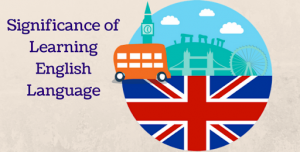
This week we are continuing our series on TFL. We have already posted about
the tube, and today we are going to be explaining all about the trains.
First some history and interesting trivia (for those pub quizzes)
The official name of the trains is National Rail, but normally you will hear people calling them trains or mainline. There are several companies that provide services for National Rail and sometimes ticket rules can vary especially for discounted tickets, such as children.
The operators that can be found in London are:
[one_half]
- c2c
- Chiltern Main Line
- Great Northern
- Great Western Railway
- Greater Anglia[/one_half][one_half_last]
- London Midland
- Southern
- Southeastern
- South West Trains
- Thameslink[/one_half_last]
National Rail came into existence in 1999, before that trains were managed by the state-owned British Rail company. Nowadays almost 3/4 of voters would like the trains to stop being a private company and become nationalised again, but there are no official plans for that to happen.
For many years all official signs used the Rail Alphabet font but with time the different operators started to use their preferred fonts instead of Rail Alphabet. However, most of the NHS signs still use it.
National Rail has 330 stations within London, and and extra 36 that are outside but can be accessed with TFL tickets. Of those, 13 are considered national hubs and have over 2 million trips per year!
Tickets and fares
You always need to pay to use the train. If you don’t pay you can get fined and asked to leave the train. Using the wrong ticket is considered fraud, and you can be considered a criminal.
If you are travelling with children rules change depending on the operator. Most allow children up to 5 to travel for free with an adult, and children up to 10 to travel for free with a 5-10 oyster card. Check at the station or online before you travel to avoid problems.
Tickets for adults work in the same way as for the Tube, you can check our
previous post for all the information. You can interchange between operators with the same ticket.
If gates are open at a station, you still need to touch in and out or insert your paper ticket.
If a train is not running, you will usually be able to you the ticket you already have on other trains, underground or bus as long as you travel to the same destination. If you use pay as you go you could be charged more but you will receive an automatic refund within one month (it usually takes 2 weeks). If you don’t you can request for one at any ticket office or
online.
Opening times
Different operators start and finish at different times, but most start at around 6 am and finish at 12 am.
On weekends and bank holidays many services don’t run or do it on a very limited timetable. Don’t assume that you can use the same train on a Sunday as you do on a weekday, always check beforehand.
 Top 5 tips for using the train
Top 5 tips for using the train
- Lately it’s not uncommon for strikes to happen (particularly with Southeastern), sometimes with very short notice. Check the service before travelling.
- Many main London stations are being upgraded and it affects train services with cancellations and modifications, sometimes up to 5 minutes before. Keep an eye (and ear) on the platform announcements and electronic signs.
- Give yourself extra time if you’re going to a station you’ve never visited before or one of the national hubs, you might need to walk more than you think.
- Doors close 30 seconds before departure time, be at the station before the time shown on the timetable.
- Download the official National Rail app. You can check services on real time, plan for future trips and buy your tickets. You can even set alarms to remind you your train is coming or to let you know if there are any problems (like an accident, delay or strike).
And one extra tip: make sure you get on the right train! Many services are express and don’t stop everywhere.
Do you have any tips for using the train? Tell us in the comments.
 This week we are continuing our series on TFL. We have already posted about the tube, and today we are going to be explaining all about the trains.
First some history and interesting trivia (for those pub quizzes)
The official name of the trains is National Rail, but normally you will hear people calling them trains or mainline. There are several companies that provide services for National Rail and sometimes ticket rules can vary especially for discounted tickets, such as children.
The operators that can be found in London are:
[one_half]
This week we are continuing our series on TFL. We have already posted about the tube, and today we are going to be explaining all about the trains.
First some history and interesting trivia (for those pub quizzes)
The official name of the trains is National Rail, but normally you will hear people calling them trains or mainline. There are several companies that provide services for National Rail and sometimes ticket rules can vary especially for discounted tickets, such as children.
The operators that can be found in London are:
[one_half]
 Top 5 tips for using the train
Top 5 tips for using the train






